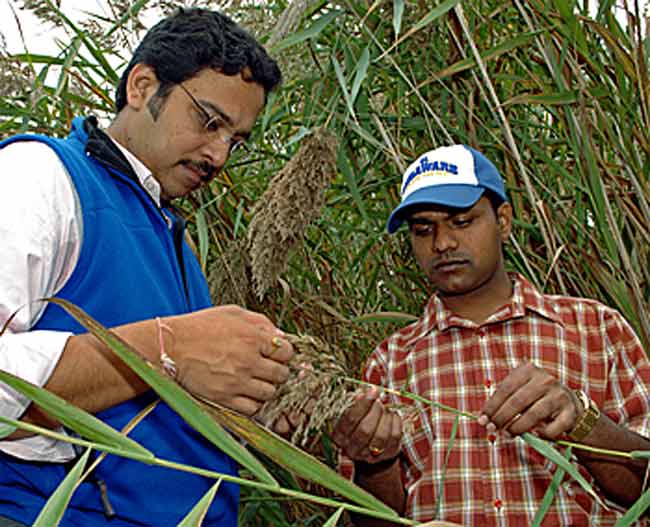Invasive Plant Conquers with Chemical Warfare

An invasive marsh plant conquers leafy enemies with squirts of acid so toxic it disintegrates plant roots on contact, allowing for a toppling take-over.
Scientists have discovered a hidden weapon that Phragmites australis, considered one of the most invasive wetland plants in the United States, uses to bump off its neighbors. Walnut trees, pine trees, ferns and sunflowers exude chemical substances to prevent other plants from growing too close to them.
However, Phragmites takes this cunning chemical warfare to a new level, using the strategy not so much to keep away other plants as to aggressively conquer them and invade new territory.
Toxic tactics
There are several strains of Phragmites, some of which are native and co-exist with other marsh plants and others that are invasive, taking over entire marshes like leafy Napoleons rising to power.
Harsh Bais, a plant biologist at the University of Delaware, and his colleagues grew native and invasive forms of Phragmites in aquatic labs, from which they collected substances secreted by the plants. They found both invasive and native Phragmites produced so-called gallic acid, a chemical humans use to tan leather. But the invasive plant released the acid from its roots at much higher concentrations than did natives.
Once exuded into the surrounding environment, the toxin targets a structural protein called tubulin found in the roots of neighboring plants. The protein keeps plant roots intact and helps them grow straight in the soil.
Get the world’s most fascinating discoveries delivered straight to your inbox.
Within 10 minutes of exposure to the toxin in the lab, the tubulin of a marsh plant started to disintegrate. In 20 minutes, the structural material was gone.
“When the roots collapse from the acid, the plant loses its integrity and dies,” Bais said. “It's like having a building with no foundation—it's on its way to self-destruction.”
The study is detailed in the latest issue of the Journal of Chemical Ecology.
Marsh health
As the invasive reed pulls the foundation from beneath marshlands in the United States, the scientists say it has greatly altered marsh ecology.
"In Delaware, about 30,000 acres have been infested with Phragmites," said study team member John Gallagher, also of the University of Delaware.
The result is a loss of biodiversity and the related reduction of food and habitat for wildlife as well as a drying up of creeks that served as transport between the marsh and nearby bodies of water.
"[Phragmites] produces a very large biomass and a lot of roots, and they fill in the little creeks that form a network of small veins that go up in the marsh, enabling exchange to occur between the marsh and the creeks and the bay," Gallagher told LiveScience.
With the new information, Gallagher suggests scientists could look for strains of marsh plants that are resistant to the gallic-acid assault.
- Video: Cunning Weed Sniffs Out Victims
- Top 10 Poisonous Plants
- Images: Invasive Species
Jeanna Bryner is managing editor of Scientific American. Previously she was editor in chief of Live Science and, prior to that, an editor at Scholastic's Science World magazine. Bryner has an English degree from Salisbury University, a master's degree in biogeochemistry and environmental sciences from the University of Maryland and a graduate science journalism degree from New York University. She has worked as a biologist in Florida, where she monitored wetlands and did field surveys for endangered species, including the gorgeous Florida Scrub Jay. She also received an ocean sciences journalism fellowship from the Woods Hole Oceanographic Institution. She is a firm believer that science is for everyone and that just about everything can be viewed through the lens of science.


